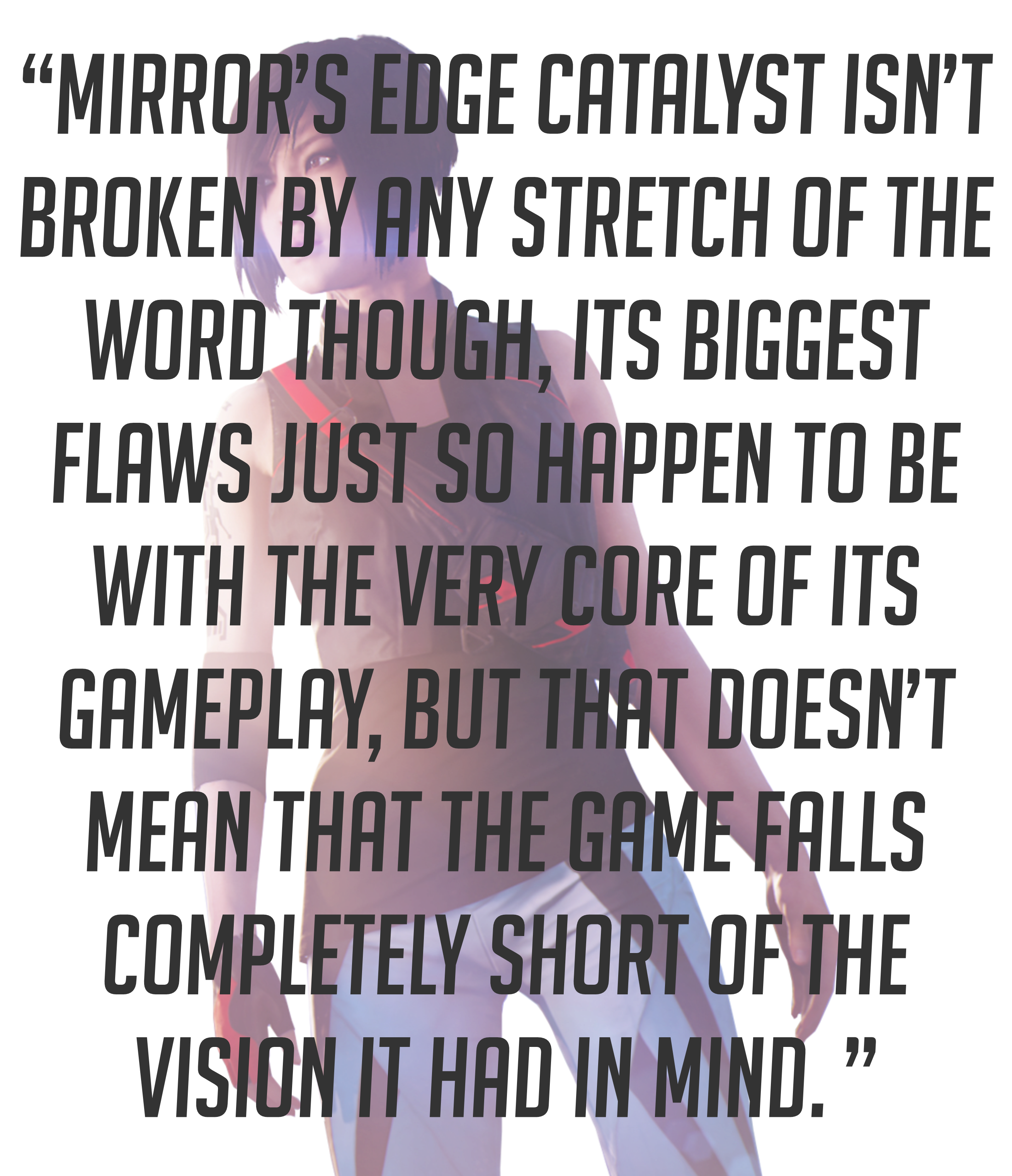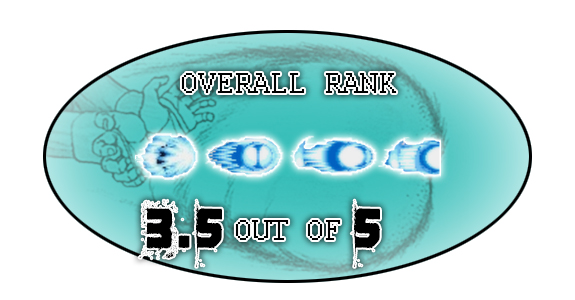QCF: Mirror's Edge Catalyst

 hen DICE first showed off Mirror’s Edge, it was a pledge to turn whatever we thought about first-person adventure games on its head; guns weren’t the focal point, your sense of momentum, and imagination was.
hen DICE first showed off Mirror’s Edge, it was a pledge to turn whatever we thought about first-person adventure games on its head; guns weren’t the focal point, your sense of momentum, and imagination was.
The premise of a parkour-driven resistance fighting against the Big Brother-like tyranny of an all-powerful government regime created a setting that complimented both the presentation and gameplay wonderfully, delivering what could be considered one of the most criminally underrated experiences to be had in the last generation.
That’s not to say that Mirror’s Edge went entirely unnoticed, as it garnered a dedicated following despite the lukewarm success it saw commercially, and the promise for a sequel kept fans foaming at the mouth for years—and well, it was…kind of worth it. Expanding Mirror’s Edge level design into an Open-World template only seemed like the most natural course of progression that the series could take, but the execution of the approach is a bit too clunky to justify the anticipation this entry had going for it these last couple years, and it’s a damn shame.

As I mentioned before, the biggest change to the core of ME’s gameplay is the world itself; it’s a lot less direct this time around. The exhilarating sensation of running from rooftop to rooftop was a little bittersweet whenever you hit that invisible wall that prevented from veering any further off of the path of what was admittedly a very linear stage. Those walls are practically torn down in Catalyst, Faith can leap and traverse an overworld within the city skyline, and pick up missions and quests as she goes—sounds great right?
Not exactly—as stimulating as the idea of an open world is, it can only be as good as its level design, and the means to intuitively traverse, and navigate it. This is where Catalyst drops the ball.
Catalyst’s predecessor had a system in place to acclimate the sense of velocity and acrobatics that it touted by highlighting each and every point of contextual architecture that could be used in the color red; you saw a red box, railing, scaffolding, and more. It may have looked a bit gimmicky, but it worked, and didn’t really detract from the aesthetic of the game’s graphical design either.
Catalyst shakes up this design quite a bit with Runner’s Vision, a waypoint system that dynamically points the best path out to you as you move, contextually highlighting pathways, platform, or scaffolds once you’re in a certain proximity of them. This system is just jarring, and slow—one of the biggest hooks to Mirror’s Edge was how fluid and seamless its momentum was, and the shift over to a system like this didn’t really do it any  favors, it only detracted from it instead.
favors, it only detracted from it instead.
Now I understand that Runner’s Vision is only a tool that can be used for direction, and you don’t actually have to use it, as players can opt to navigate through primary senses of the immediate scenery itself, but the lack of those static red highlights made the thought of that a bit taxing, and it just shouldn’t be. It’s very similar to the issues of Arkham Knight’s stage design that made traveling through it so exhausting—a poor waypoint system juxtaposed against an open world that’s too overwhelmingly aimless and nuanced to explore naturally, which ultimately makes for bad time traveling in a game, and Mirror’s Edge is ALL ABOUT traveling essentially.
The weirder aspect to all of this is because of the open world direction, it begged for the all too expected Skill-tree system to balance out the balance out the possibility of sequence-breaking, and well, it wasn’t very well thought out here. Aside from the more advanced techniques that can be used to trek the sprawling rooftops and building sides, Catalyst also gates the more basic, vital maneuvers that’re necessary to the trademark fluidity of Mirror’s Edge.
I know that a majority of the review has essentially read out as if I’ve been taking a big shit on the game, but there were still parts that I really enjoyed, like the fighting system.
The combat in this sequel is dramatically improved over the initial button-mash heavy system that the previous entry offered. The added depth to Faith’s combat repertoire includes directional strikes and kicks that can send foes flying in whatever direction the trajectory of your attack was aimed towards, making additional use of the area around you with environmental damage a handy tactic, and effective method for crowd control against multiple opponents when the time calls for it. There are also combos that you can buy, and learn from that same upgrade tree that was touched upon earlier, and certain combos are designed to exploit certain weaknesses from the variety of enemies that you’ll engage in the city of Glass.
Instead of simply encountering your typical class of a melee goon, or gun-packing one; you’ll come across some heavy hitters in the Melee class that require specific strategies, or specially armed shooters who can actually disrupt Faith’s movement with their weapons, and the Sentinels—creeps who can move and traverse the environment just as well as you can.

Mirror’s Edge Catalyst isn’t broken by any stretch of the word though, its biggest flaws just so happen to be with the very core of its gameplay, but that doesn’t mean that the game falls completely short of the vision it had in mind. It’s a beautiful game, and it’s definitely a step in the right direction for the series, but I feel that the one component that it couldn’t afford to be clumsy with was what really hurt my time with the title the most.
I still think it’s worth a look, just don’t reach (or jump) for it too hard.






 GeorgieBoysAXE
GeorgieBoysAXE




